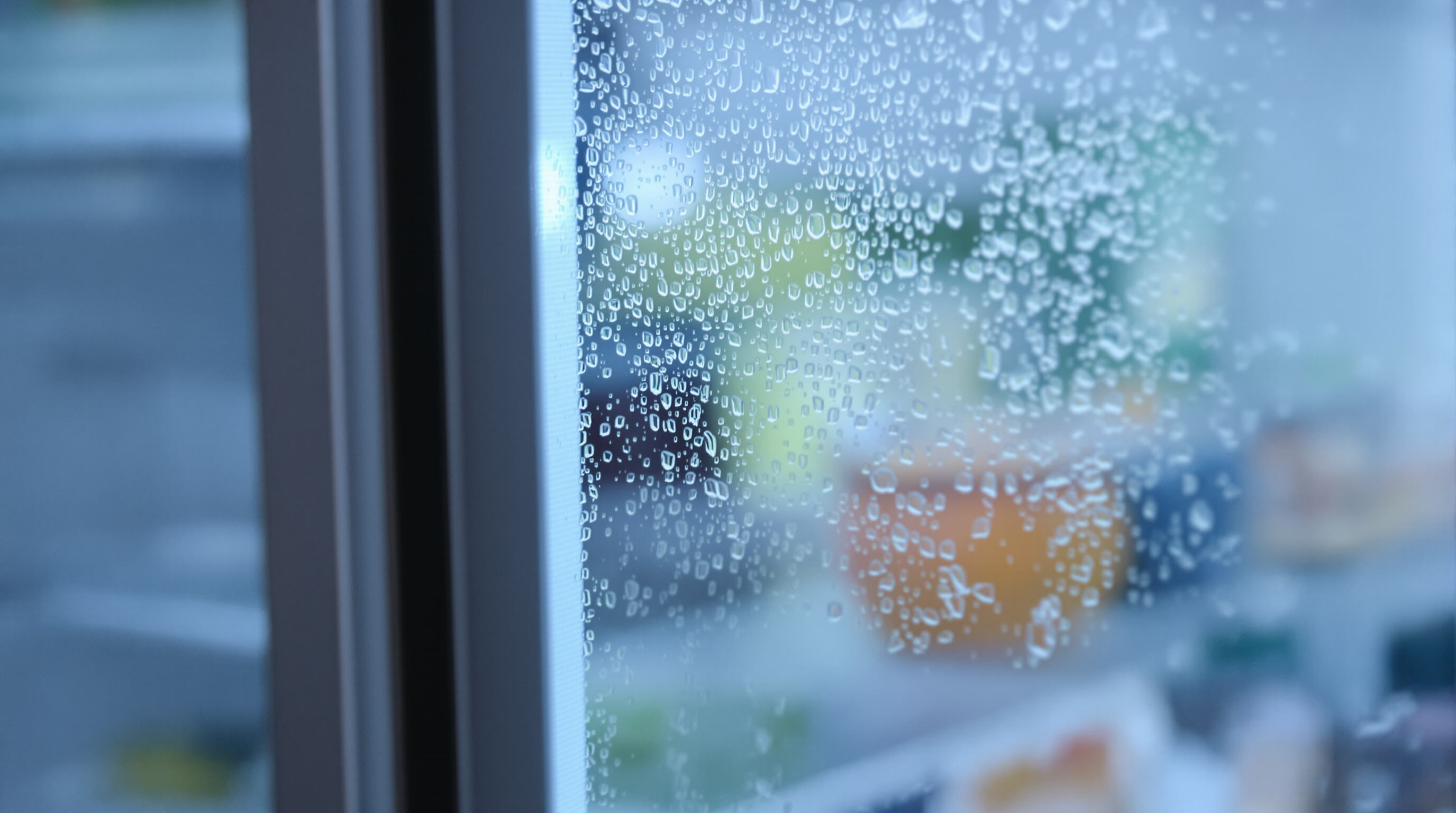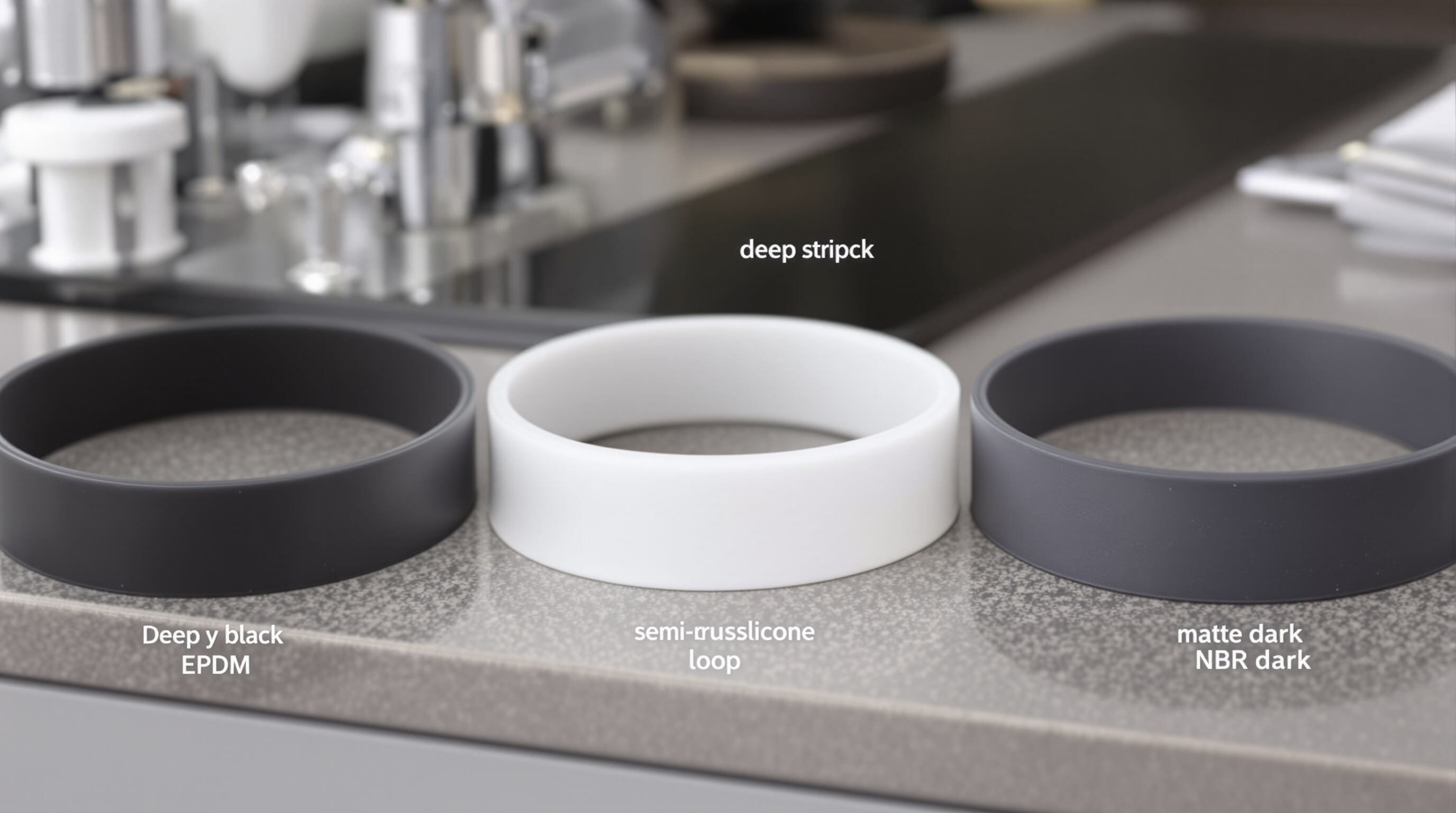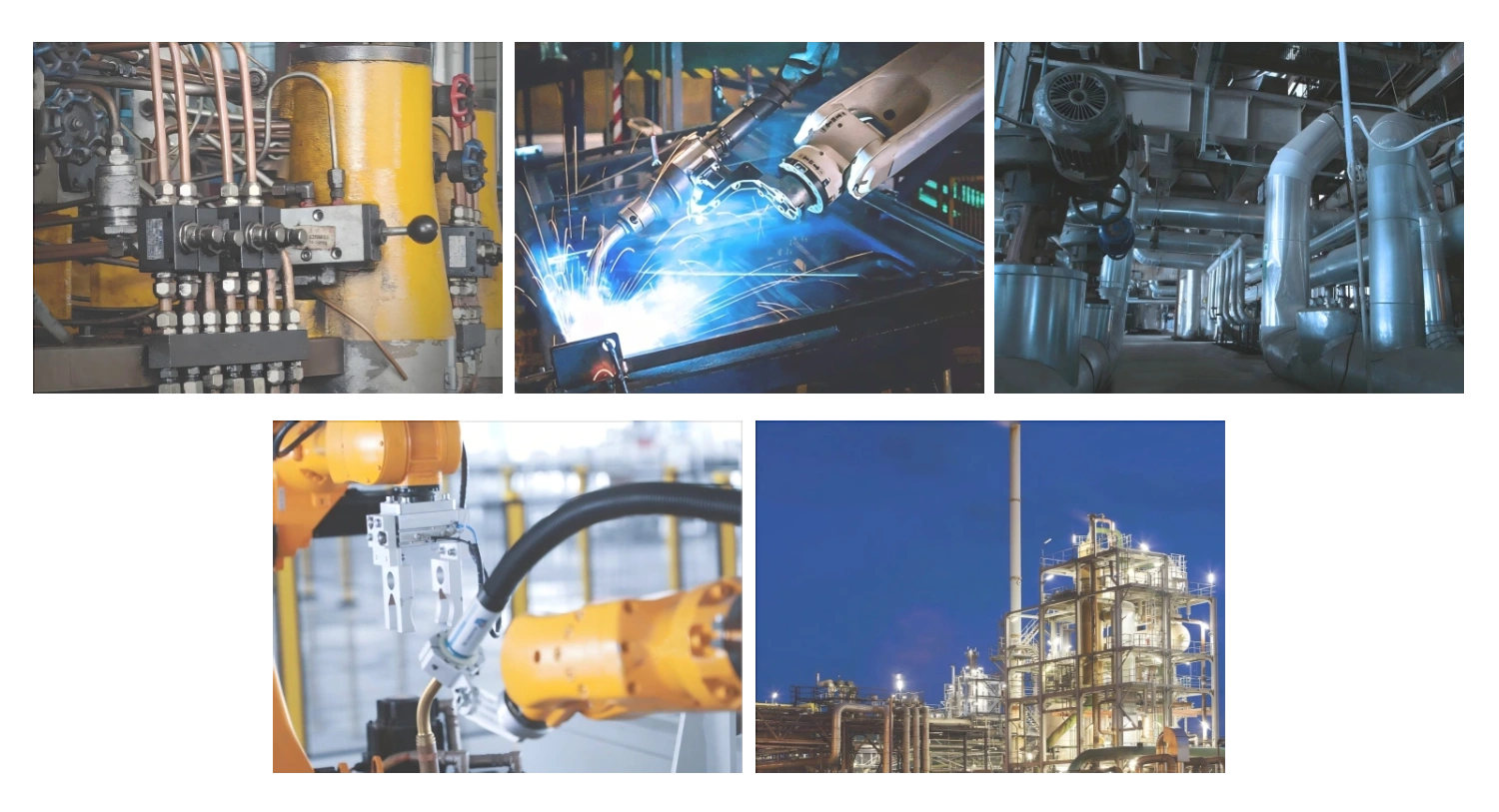התפקידים המרכזיים של חגורות גומי בחתימה של מכשורים
איך חגורות גומי מונעות דליפות במכשורים ביתיים
חוגות גומי פועלות כמו מהנדסים זעירים בעצמן, מותאמות בדיוק לחריצים כמעט בלתי נראים שבהם שני משטחים נפגשים. הסיבה שהן פועלות כל כך טוב היא היכולת שלהן להימתח ולהתפתל כאשר מתרחשים שינויי לחץ, ובעצם יוצרות מכBarrier כמעט impermeable למים וגם למוצרי גז שמנסים לברוח החוצה. ניקח לדוגמה מכונות כביסה. החותמים הפנימיים של הגומי שם חייבים להתמודד עם כוחות די משמעותיים, בערך 4 עד 8 בר של לחץ, כל הזמן תוך כדי שהם מתמודדים עם הרעידות הקבועות שמגיעה מהפעלת המכונה. העבודה הזו אינה רק חשובה - היא קריטית, שכן לפי מחקר מסוים של האקדמיה של פונמון מהשנה 2023, בערך רבע מכל הראות באפליקציות חשמליות נובעות מחותמים כושלים.
שמירה על התנגדות למים ולאוויר: עקרון החותם
חותם אפקטיבי תלוי בשלושה גורמים שקשורים זה לזה ותלויים אחד בשני:
- כוח דחיסה : סטייה של 20–30% ממקסימום היכולת מעדיפה את מגע המשטח
- זיכרון החומר : אלסטומרים בעלי קפיצה גבוהה שומרים על לחץ החותם לאורך זמן
- הדבקה למשטח : אינטראקציה בסקלה מיקרוסקופית מונעת מסילות דליפת קפילריות
השלשה הזו מאפשרת לאטמים גומיים מותקנים כראוי להשיג 99.97% מניעת דליפה בסביבות בדיקה מאושרות על ידי הסוכנות להגנת הסביבה (EPA).
מקרה בוחן: כשלון אטימה במקפיאים עקב פגינת חומר
ניתוח של 1,200 תיקונים במקפיאים שנערך בשנת 2024 זיהה את גורמי הכשלון העיקריים באטימה:
| סיבת הכשלון | תדירות | עלות ממוצעת של תיקון |
|---|---|---|
| אטומים crack | 41% | $740 |
| התכווצות האטום | 29% | $580 |
| איבוד לחיצה | 19% | $420 |
אטומי EPDM פגינו ב-73% מהר יותר בדגמים ללא קפיאה מאשר בדגמים מסורתיים, מה שמדגיש את הצורך בחומרים עמידים לסיבובים תרמיים.
קריטריונים לבחירת המוצרים: שקיעת לחץ, גמישות, ותפקוד לטווח ארוך
יצרנים מעדיפים מדדי תפקוד מאומתים על פי סטנדרטים בתעשייה:
- שקיעת לחץ <15% (ASTM D395) כדי להבטיח כוח חותם מתמשך
- חוזק קריעה >4.5 MPa למניעת נזקים במהלך ההתקנה
- גמישות בטמפרטורות נמוכות עד -40°C לכדי תאימות למקררים
תבניות סיליקון מהוות כיום 68% מהשווקים הגבוהים באיכות עקב תוחלת חיים של עד 20 שנה (Materials Today 2023).
הביקוש לリングי סיליקון בעלי ביצועים מתקדמים גדל appliances מודרניות
השוק העולמי לפ seals באפליקציות צפוי לגדול ב-7.8%AGR עד שנת 2030 (MarketsandMarkets 2024), בעקבות:
- أجهزة חכמות המזדקקות seals עם דירוג IP68
- תקנות יעילות אנרגטית המחייבות קצב דליפה מתחת ל-0.5%
- עיצובים קומפקטיים ובעלי מתח גבוה הגובים מחיר מהמערכות להרחקת מים
מגמה זו האיצה את אימוץ של חומרים היברידיים כמו פלואורו-סיליקון, אשר מקטינים את תדירות ההחלפה של סילוקים ב-40% במכשירים מונעים על ידי אינטרנט של הדברים (IoT).
חבילות גומי במערכות קירור: אתגרים הקשורים לטמפרטורה ולקיימום

יישומים נפוצים במקררים ובקפפות
חפפות גומי משחקות תפקיד חשוב במערכות קירור, שם הן פועלות כסדפות דלת, מפרידות בין תאים קרים, ו יוצרות חפפות מסביב לקליפות הקומפרסור. רכיבים אלו עוצרים את חדירת האוויר החם פנימה, ושמרים על רמת הרטיבות בתוך המקרר בשליטה, בדרך כלל ב-30% ובאופן די חשוב לשמירה על טרייה של המזון למשך זמן ארוך יותר. כשמדובר במקררים בפרט, יש משהו מיוחד בחפפות EPDM המותאמות לאבקת קרח. הן יכולות להתמודד עם אי-alinuity של הדלתות בגודל של כ-2 מילימטר, כך שגם כשדלתות אינן מושרות במדויק לאחר פתיחה וסגירה חוזרת, הבידוד פועל כראוי מבלי לאפשר למקשה להימלט החוצה או לאוויר חם להכנס פנימה.
עמידות בטמפרטורה של סדפות גומי בסביבות קרות
חבילות סיליקון שפותחו ליישומים במערכת קירור שומרות על גמישות גם בدرجות حرارة נמוכות כמו מינוס 60 מעלות צלזיוס, מה שעובר על ביצועי חבילות EPDM רגילות, אשר בדרך כלל פועלות היטב עד סביבות מינוס 40 מעלות. כאשר הטמפרטורות יורדות מתחת לנקודות אלו, החומרים 대부분 הופכים לקשורים, ובעיה זו אחראית לכ-17% מכלל תביעות האחריות במכשור ביתי, על פי נתוני תעשיית ה-VAC של שנת 2023. יצרנים החלו להוסיף אלסטומרים תרמופלסטיים לנוסחאות המתקדמות שלהם בתקופה האחרונה, וכך הפחיתו את בעיות הדפורמציה תחת עומס קור ב-40% בקירוב בהשוואה לחומרים גמישים מסורתיים. שיפור זה תורם לשיפור משמעותי ביציבות לטווח הרחוק של מכשור הפועל בתנאים קיצוניים.
עמידות תחת מחזור טמפרטורות מתמיד
כאשר רכיבים גומיים נחשפים שוב ושוב לשינויי טמפרטורה בין קרה כמו במקרר (בערך 4 מעלות צלזיוס) לטמפרטורת החדר (בערך 22 מעלות צלזיוס), הם מתחילים להתפרק מהר יותר מהרגיל. חומרים באיכות גבוהה יותר של חגורות המותאמות לתקן ASTM D395 עם ערך של set compression מתחת ל-15% יכולים לשרוד מעל 50,000 מחזורים תרמיים, כלומר, הם נמשכים יותר מפעמיים את חיי השימוש של חותמים רגילים. חדשנות בمواد גם התקדמה משמעותית. פולימרים שקשורים ביניהם (cross linked) מפחיתים את הסדקים על פני השטח ב-66% בערך, לאחר שלוש שנים בתנאי בדיקה, דבר בעל חשיבות גדולה במיוחד ליישומים קריטיים כמו חותמי ציר הקומפרסור, בהם כשלונות יקרים ומקשים על תהליך העבודה.
פתרונות ניקוז במachines כביסה תוך שימוש בחגורות גומי
פועלים מול דליפת מים מחגורות נבליות במachines כביסה
リングות מכונת הכביסה מאבדות 12–15% מיכולת החסימה שלהן תוך 3–5 שנים עקב מתח מכאנלי וחשיפה כימית. אפילו חריץ של 0.5 מ"מ יכול לגרום לדליפת מים של 200–300 מ"ל בכל מחזור. פתרונות מודרניים כוללים:
- עמידות במעוקם לחיצה ≤25% (ASTM D395)
- גאומטריה מחוזקת של השפה כדי לשמור על לחץ מגע
- טקסטורה על פני השטח כדי למזער הצטברות מינרלים
שיפורים אלו מעצימים את האמינות לאורך זמן ללא הגדלת דרישות התפעול.
דרישות חסימה דינמית תחת לחץ מים גבוה
במהלך מחזורי סיבוב מהירים (1,200–1,600 סל"ד), דלתות מכונת הכביסה נתקלות בלחצים פועמים עד 2.5 בר. כדי לשמור על שלמותן, תרכובות הרזין המתקדמות חייבות לעמוד בדרישות חומריות קפדניות:
| תכונה | דרישה |
|---|---|
| חוזק מתיחה | ≥12 MPa |
| התארכות בשבירה | ≥400% |
| שיעור שיקום לאחר לחיצה | ≥90% בתוך 30 שניות |
תכונות אלו מבטיחות התאוששות מהירה ו החזקה מתמשכת בפועלים תחת עומסים דינמיים.
הארכת תקופת השירות באמצעות עיצוב אטם каoutشي מותאם
יצרנים משתמשים כעת באנליזה בשיטת איבר סופי (FEA) כדי למדל יותר מעשור של עומסים מחזוריים במהלך הפיתוח. שיפורים עיקריים בעיצוב כוללים:
- חומות סכר פליזים מרובות שפזורות את המאמץ ומונעות כשלון בנקודה בודדת
- חומרים היברידיים המשלבים את עמידות האוזון של EPDM עם גמישות הטמפרטורה הנמוכה של סיליקון
- סיבולת לחיצה רדיאלית של ±0.05 מ"מ להזזת דלת מדויקת
חדשנות זו תורמת לשיפור ברובוסטות ובסיפוק המשתמש.
חדשון: חומרים אנטימיקרוביאליים каoutchy ל החזקה היגיינית
מחקר של ארגון NSF הבינלאומי משנת 2023 גילה כי 68% מחותמות של מכונות כביסה מכילות קִפּוּן וחיידקים. תרכובות דור הבא כוללות:
- תוספים של יוני כסף שמאפשרים הפחתה של 99.9% במיקרואורגניזמים
- חוטטים הידרופובים שמונעים היווצרות ביופילם
- מבנים סגורים שמונעים נטישה של לחות
מאפיינים אלו משפרים משמעותית את ההיגיינה ומקטינים היווצרות ריחות בסביבות עם לחות גבוהה.
אופטימיזציה מבנית כדי להגביר התנגדות למים
שיטות סימולציה מתקדמות משפרות את פרמטרי העיצוב הקריטיים:
- חתכים כדי לאפשר התפלגות אחידה של מתחים
- יחס עומק-רוחב של חריצים מוא,opt 1.2:1
- רדיוס מעבר מינימלי של 3 מ"מ כדי לאפשר התנגדות להתחלה של סדקים
ביחד, הישגים אלו הקטינו ב-43% את תביעות האחריות הקשורים לדליפת מים במותגי מוצרי חשמל מרכזיים מאז 2020.
בחירת חומרים עבור חישוקים מאט rubber)} במכשור חשמלי למשך חיים ארוך

הערכת אלסטומרים להחמרת טמפרטורה וכימיקלים
בימינו, מתקנים מודרניים צריכים איטמים שיכולים לעמוד במצבים קיצוניים למדי. סיליקון פועל ממש טוב כאשר הדברים נעשים חמים מאוד או קרים מאוד. אנחנו מדברים על טמפרטורות של כ-230 מעלות צלזיוס בתנורים, ומטה מתחת למינוס 60 עבור איטמי הקפאות. בגלל זה רואים סיליקון בשימוש נרחב בדלתות תנור ובתוך מכונות כביסה. יש גם את גומי EPDM שמפגין עמידות טובה יותר בפני חשיפה לשמש ולאוזון. הגיוני לשימוש במתקנים שנמצאים בחוץ או ליד חלונות, שבהם עלולים להיפגע מהשמש לאורך זמן. בחינה עדכנית של חומרי פולימר הראתה משהו מעניין גם על גומי NBR. החומר מתכווץ בערך ב-40 אחוז פחות upon coming into contact with oils compared to regular rubber types. זה חשוב מאוד למכונות כביסה מאחר והמשאבות שלהן לעתים קרובות באות במגע עם שמן, וככל ששיעור ההתנפחות קטן יותר – כך הסיכוי לדליפות ולתקלות בעתיד קטן.
השוואת EPDM, סיליקון ו- NBR ליישומים במכשור ביתי
| חומר | הכי מתאים עבור | הגבלה |
|---|---|---|
| EPDM | ח seals של דלת מקרר | עמידות נמוכה לשמן |
| סיליקון | חבישות יבושה בטמפרטורה גבוהה | מחיר גבוה יותר לעומת EPDM |
| NBR | שסתומי ניקוז של מכונת כלים | מתפרק בטמפרטורה מעל 100 מעלות צלזיוס |
EPDM שומר על 95% ממעכתיותו ב- -40 מעלות צלזיוס (דוח ביצועי חומרים 2024), מה שהופך אותו לרלוונטי אידיאלי לסביבות קרות. ל-silicone יש ירידה של 35% פחות בקביעות לחץ מאשר EPDM, מה שמבטיח חיבושים של דלת מקרר צמודים וארוכי טווח.
איזון בין עלות לביצועים בחומרים לחיבושים גומי
סיליקון עשוי להחזיר יצרנים בערך פי 2.3 ממה שמעולה עלות EPDM, אך כשממשיכים כ-15 שנים בתוך מכונות כלים, רוב היצרנים היוקרתיים עדיין רואים בהם השקעה שווה-ערך. בהסתכלות על כמה פריצות של מכונות מ-2024, גילינו שיצרני דגם בסיסי מצליחים להסתדר עם חומות מיוצרות מנוסחאות NBR מותאמות. החומרים הללו נמשכות בין 7 ל-10 שנים, שזה בערך אותו טווח כמו זה של EPDM ממוצע, אך חוסכות ליצרנים כ-18% בمواد בלבד. גם חומרי הפולימר המשולבים החדשים שינו את התמונה. כיום, יצרנים יכולים לייצר חומות ב-22% סמיכות ללא עליה בעלויות הייצור, כך שהקנסות הישנות בין מחיר לביצועים כבר אינן קשיחות כפי שהן היו.
שאלות נפוצות
אילו חומרים משמשים בעיקר לייצור חומות גומי במכשור ביתי?
החומרים העיקריים הם EPDM, סיליקון ו-NBR, וכל אחד מהם מתאים לתנאים שונים כגון התנגדות לטמפרטורה, חשיפה לשמן ושקולות כלכליות.
מדוע החומרים המרוכבים חשובים במקררים ובקפפות?
חומר מרוכב מונע מהאוויר החם להיכנס ועוזר בשמירה על רמות לחות אחידות, מה שקריטי לשימור המזון.
איך החומרים המרוכבים פועלים במכונות כביסה?
הם מונעים דליפות על ידי שמירה על חותם צמוד גם בתנאי לחץ גבוה במהלך מחזורי הסיבוב, ועמידה בפני חשיפה כימית לאורך זמן.
איך מושגת עמידות ועמידות בטמפרטורה בחומרים חותמים?
באמצעות שימוש בחומרים מתקדמים כמו סיליקון ו-EPDM, שממשיכים לשמור על גמישות ותקינות גם בטמפרטורות גבוהות או נמוכות ביותר.







